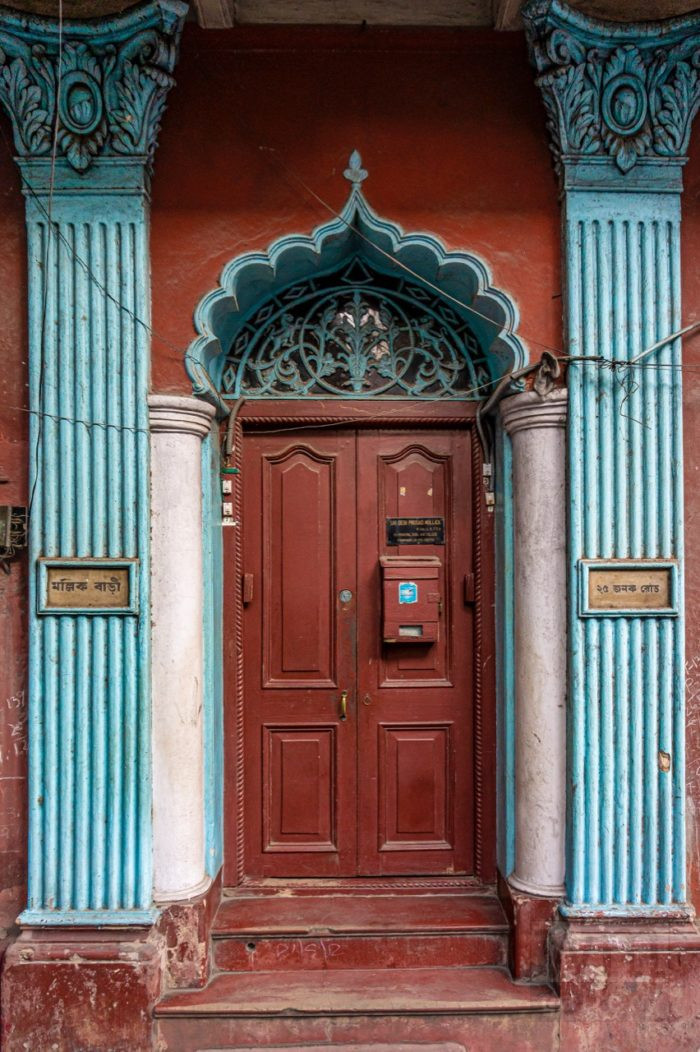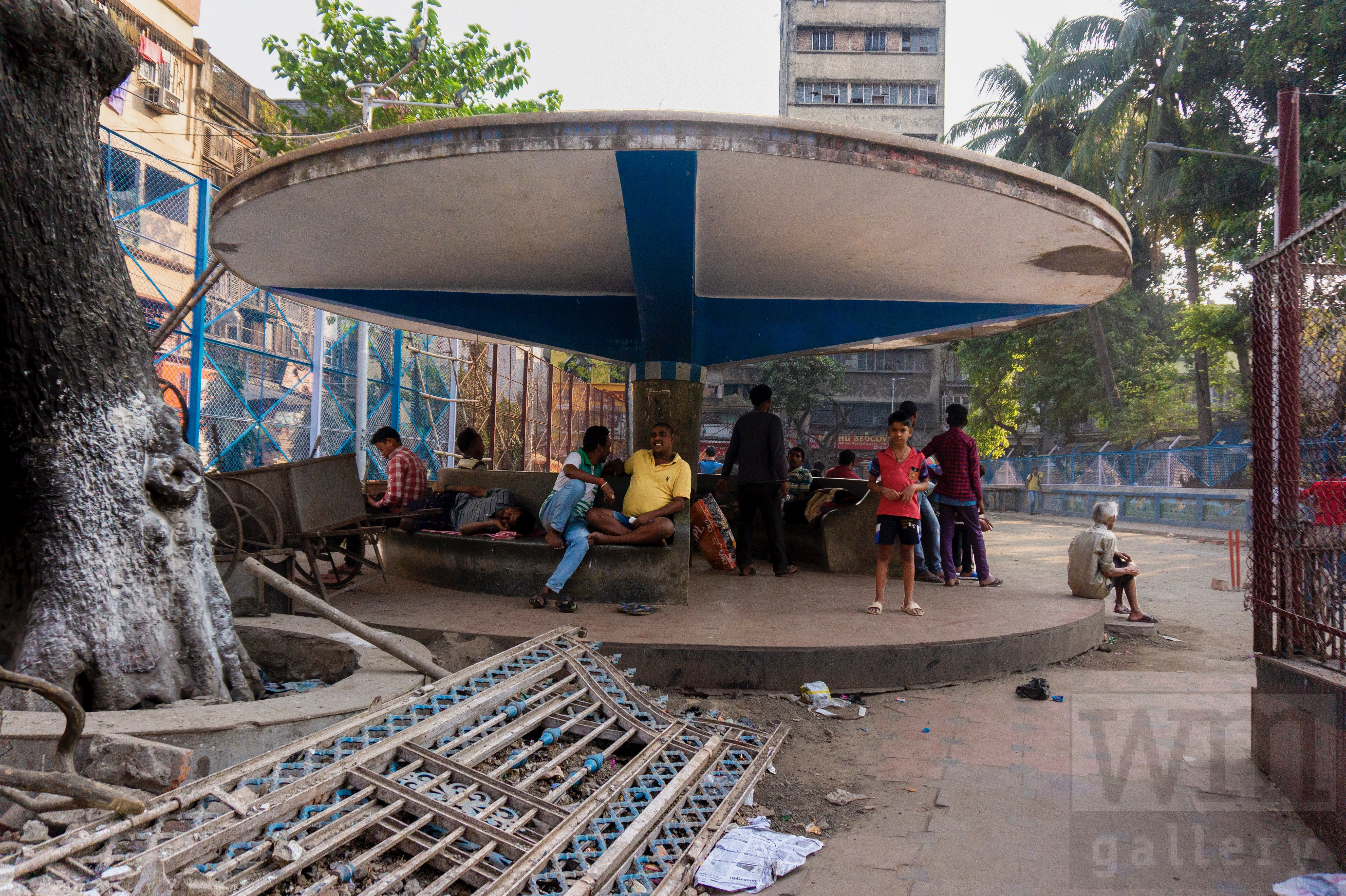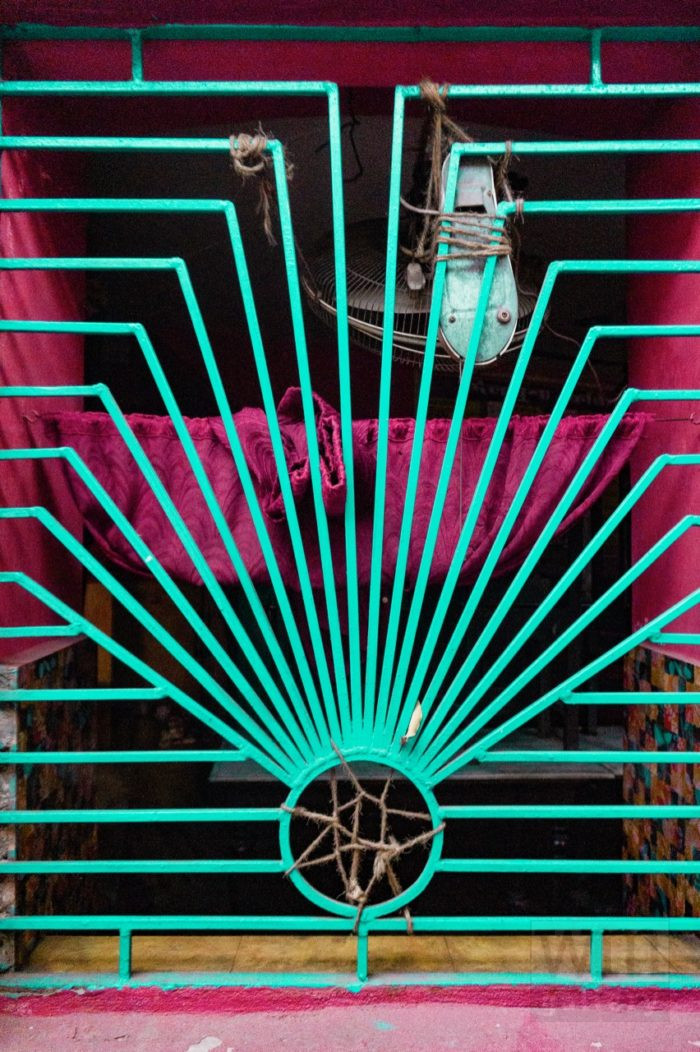Sebastian Rypson “Bhadralok Building – An Architectural Stroll through Middle-Class India” 25.11.2022-07.01.2023
October 1, 2022 10:56 pmGallery WM is pleasantly incredulous at presenting:
Bhadralok Building
an architectural stroll through middle-class Kolkata, India
by
Sebastian Rypson
25/11/2022 through 07/01/2023
Finissage : Saturday 7th of January 2023, 13:00-18:00 hrs
In Bhadralok Building Sebastian Rypson attempts to photographically reimagine the world of the Bhadralok (Bhadra = Gentle, Lok = Folk) and their descendants in present-day Kolkata (Calcutta, India). Through the prism of architecture and the use of urban space, Rypson strolls through India’s (and specifically, Kolkata’s) middle-class neighbourhoods documenting the urban backdrop that provided the natural environment for what was once Calcutta’s most illustrious social class and which defined Indian Modernity.

© Sebastian Rypson
Bhadralok was a predominantly Hindu, upper-caste, socio-cultural class that originated in Bengal in the early 19th century, with Raj-era Calcutta as its natural hub. After the British East India Company established the Supreme Court of Judicature in Calcutta in 1774, English replaced Persian and Urdu as the official language. This precipitated the decline of Bengal’s original Muslim aristocracy and, with the Permanent Settlement Act of 1793, gave rise to a new, mostly Hindu, educated middle class. As the Calcutta Presidency swiftly developed and gained ever more power and territory on the Indian sub-continent, the demand for local administrators and bureaucracy created an opening for Western-style education, novel ideas and progressive thought. This brought about what is commonly known as the Bengal Renaissance (late 18th through mid 20th century), characterised by a socio-political awakening in the arts, literature, music, philosophy, religion and science. The Bhadralok – distinct from the landed gentry (the Zamindars) and the lower classes (Chhotolok) – became both the creators and protagonists of a discourse on modernity in Bengal and as such reinvented themselves as India’s modern subjects. They became the ‘new aristocrats’ of the Bengal Renaissance and, despite the British intention to create a loyal, ‘native’ colonial class, were fundamental in the development and dissemination of a liberal, progressive and ironically anti-Colonial ideology that remains the foundation of modern, independent India today. Increasingly seen as intellectually aloof from mainstream Indian society, Independence finally marked the end of the Bhadralok era and its pre-eminence as India’s premer intellectual movement.
In Bhadralok Building Rypson aims to investigate how historical Bhadralok culture has influenced the spatial organisation of present-day Kolkata’s urban organisation. With its British-influenced architecture, accessible pavements, tree-lined streets, an emphasis on the private/public divide and a middle-class sensibility, middle-class Kolkata is an anomaly of functionalism compared to most other Indian cities. In early 2020, just before the Corona pandemic enveloped the world, Rypson strolled through the neighbourhoods that were the natural backdrop to this erstwhile middle class, documenting its buildings, iron-wrought grilles and balconies. Fascinating mixtures of Art Deco, Brutalism, Fuctionalism, Cosmism, Raj-Colonial and Tropical Modernism abound. And in between the cracks of British Colonial Rule’s hegemonic urban organisation, he stumbles across India’s ubiquitous streetside culture and behaviour, subverting the colonial structure that lies at the foundation of this teeming city. With Bhadralok Building, Rypson delves into the urban memory of what was once India’s most important socio-cultural class; The Bhadralok.
Exhibition curated by Chiara Tosolini
Sebastian Rypson will be present at the finissage on Saturday 7th of January, 13:00-18:00 hrs at Gallery WM; Elandsgracht 35

© Sebastian Rypson
Gallery WM is aangenaam verrast bij het presenteren van:
Bhadralok Building
een architecturale wandeling door middenklasse Kolkata, India
door
Sebastian Rypson
25/11/2022 t/m 07/01/2023
Finissage: zaterdag 7 januari 2023, 13:00-18:00 uur
In Bhadralok Building probeert Sebastian Rypson de wereld van de Bhadralok (Bhadra = Gentle, Lok = Folk) en hun nakomelingen in het huidige Kolkata (Calcutta, India) fotografisch te herbeelden. Door het prisma van architectuur en het gebruik van stedelijke ruimte, wandelt Rypson door de middenklassebuurten van India (en specifiek Kolkata) en documenteert de stedelijke omgeving die de natuurlijke achtergrond vormde voor wat ooit de meest illustere sociale klasse van Calcutta was, één die de Indiase moderniteit definieerde.

© Sebatian Rypson
Bhadralok was een overwegend hindoeïstische, sociaal-culturele klasse van hogere kaste die zijn oorsprong vond in Bengalen in het begin van de 19e eeuw, met het Raj-tijdperk Calcutta als natuurlijke broedplaats. Nadat de Britse Oost-Indische Compagnie in 1774 het Hooggerechtshof in Calcutta had opgericht, verving het Engels Perzisch en Urdu als officiële taal. Dit versnelde de teloorgang van de oorspronkelijke islamitische aristocratie van Bengalen en gaf, met de Permanent Settlement Act van 1793, aanleiding tot een nieuwe, voornamelijk hindoeïstische, opgeleide middenklasse. Terwijl het Calcutta-voorzitterschap zich snel ontwikkelde en steeds meer macht en territorium verwierf op het Indiase subcontinent, creëerde de vraag naar lokale bestuurders en bureaucratie een opening voor onderwijs in westerse stijl, nieuwe ideeën en progressief denken. Dit leidde tot wat algemeen bekend staat als de Bengaalse Renaissance (eind 18e tot midden 20e eeuw), gekenmerkt door een sociaal-politiek ontwaken in de kunsten, literatuur, muziek, filosofie, religie en wetenschap. De Bhadralok – onderscheiden van de landadel (de Zamindars) en de lagere klassen (de Chhotolok) – werden zowel de makers als de protagonisten van een discours over moderniteit in Bengalen en vonden zichzelf als zodanig opnieuw uit als de moderne onderdanen van India. Ze werden de ‘nieuwe aristocraten’ van de Bengaalse Renaissance en waren, ondanks het Britse voornemen om een loyale, ‘inheemse’ koloniale klasse te creëren, fundamenteel in de ontwikkeling en verspreiding van een liberale, progressieve en anti-koloniale ideologie die het fundament blijft van het moderne, onafhankelijke India van vandaag. Ironisch genoeg, met de Onafhankelijkheid werden de Bhadralok steeds meer gezien als intellectueel afstandelijk van de reguliere Indiase samenleving en betekende het uiteindelijk het einde van het Bhadralok-tijdperk en haar vooraanstaande positie als dé intellectuele beweging van India.
In Bhadralok Building wil Rypson onderzoeken hoe deze historische Bhadralok-cultuur de ruimtelijke organisatie van de hedendaagse stedelijke organisatie van Kolkata heeft beïnvloed. Met haar Brits-beïnvloedde architectuur, toegankelijke trottoirs, met bomen omzoomde straten, een nadruk op de scheiding tussen privé en openbaar en een middenklasse-gevoeligheid, is Kolkata een anomalie van functionalisme in vergelijking met de meeste andere Indiase steden. Begin 2020, net voordat de Corona-pandemie de wereld overspoelde, slenterde Rypson door de wijken die de natuurlijke achtergrond vormden voor deze voormalige middenklasse, waarbij hij de gebouwen, de ijzeren roosters en de balkons documenteerde. Fascinerende mengsels van Art Deco, Brutalisme, Fuctionalisme, Kosmisme, Raj-koloniaal en Tropisch Modernisme zijn er in overvloed. En tussen de barsten van de hegemonische stedelijke organisatie van de Britse koloniale overheersing, struikelt hij over de alomtegenwoordige Indiase straatcultuur en openbaar gedrag, de koloniale structuur ondermijnend die aan de basis ligt van deze krioelende stad. Met Bhadralok Building duikt Rypson in de stedelijke herinnering aan wat ooit de belangrijkste sociaal-culturele klasse van India was; De Bhadralok.
Tentoonstelling samengesteld door Chiara Tosolini
Sebastian Rypson zal aanwezig zijn bij de finissage op zaterdag 7 januari 2023, 13:00-18:00 uur in Gallery WM; Elandsgracht 35

© Sebastian Rypson
Media
If there is Now Walter van Teeffelen: about Bhadralok
Tags: Sebastian Rypson
